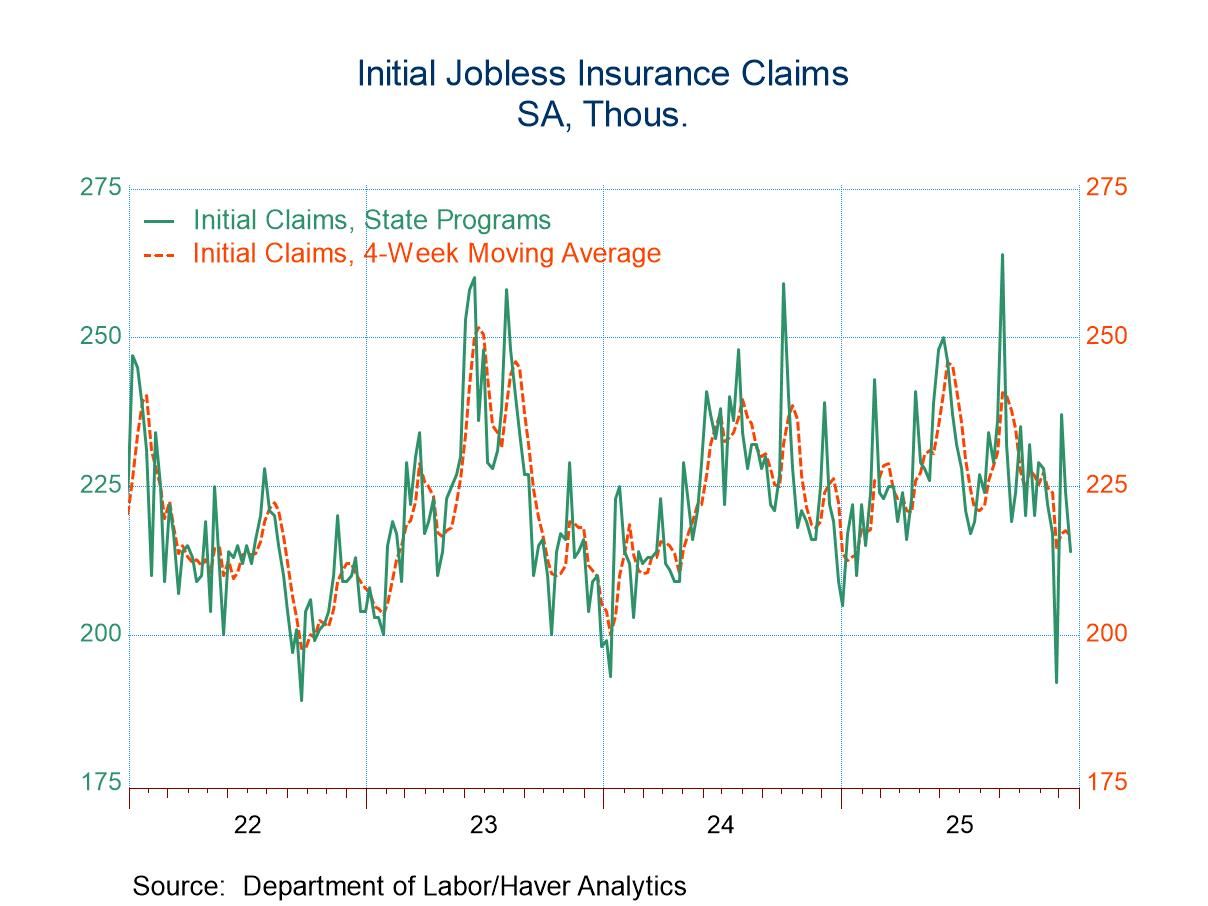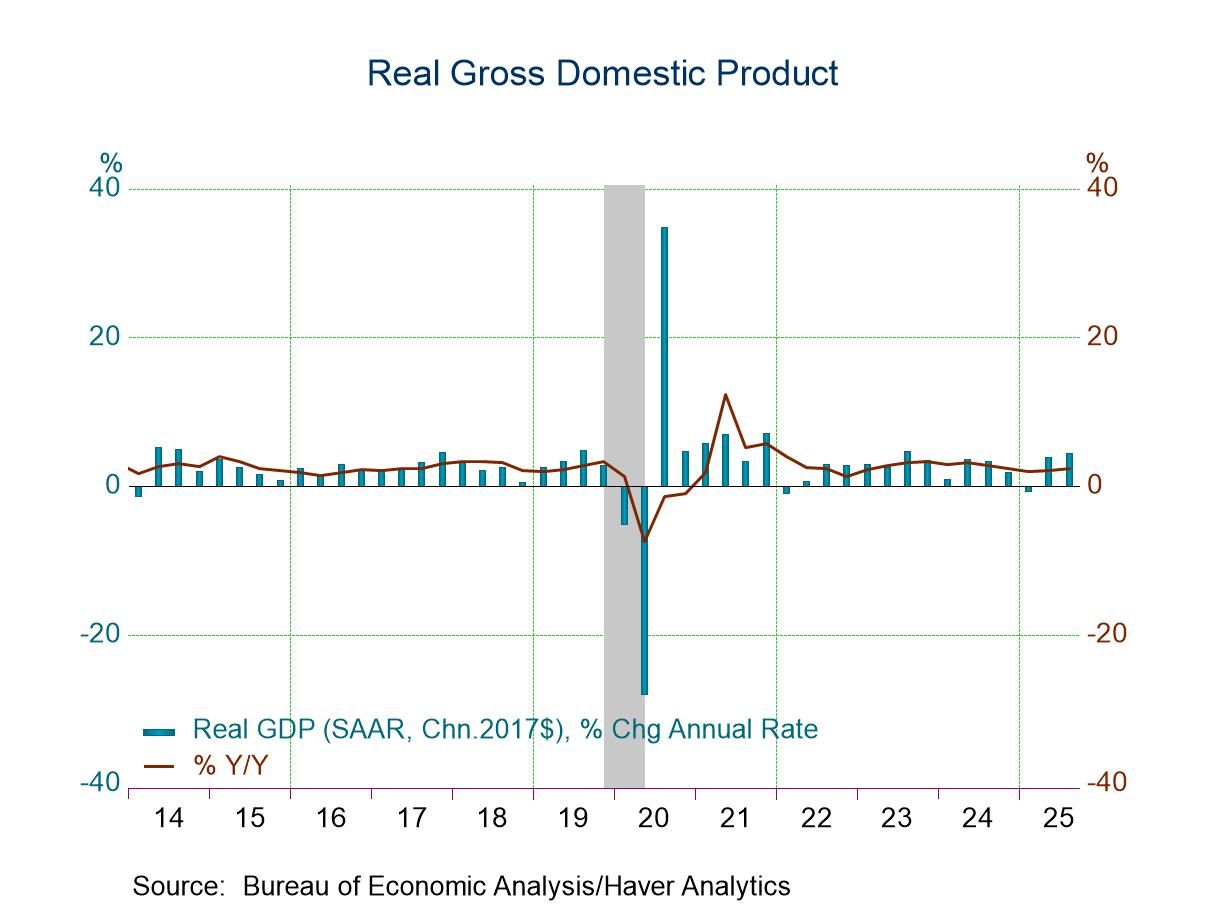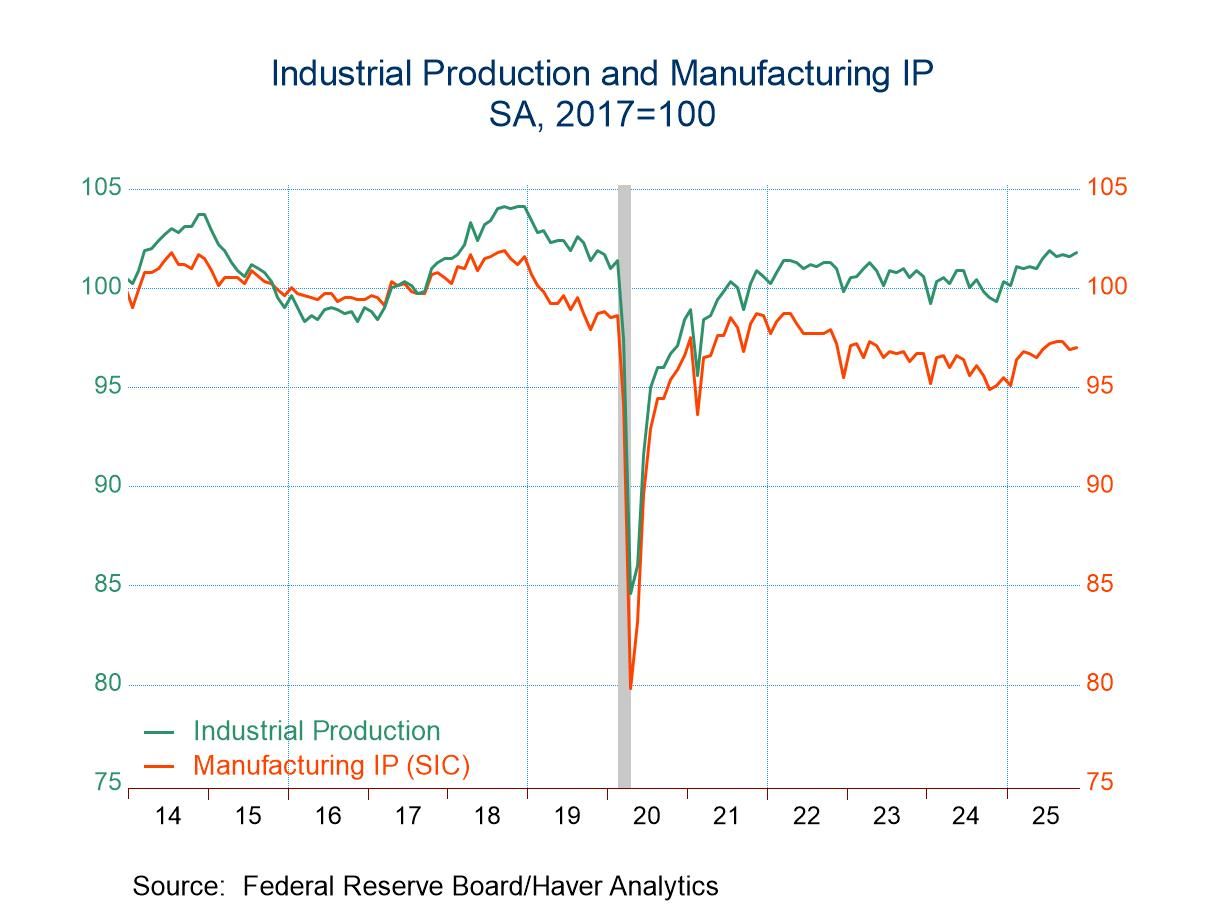Texas Manufacturing Activity and Expectations Indexes Decline in December
Summary
- General business activity at a three-month low but company outlook at a four-month high.
- Production slips, still showing solid output growth.
- Current new orders growth down slightly but still at an elevated level.
- Current employment at an eight-month high, showing robust employment growth.
- Price received ticks up, but price paid falls to a nine-month low.


Manufacturing activity in Texas continued to improve but at a slower pace in December, according to the Texas Manufacturing Outlook Survey conducted by the Federal Reserve Bank of Dallas. The overall measure, the general business activity index, fell to 8.1 in December from 11.8 in November and 14.6 in October. The December reading was the lowest since September and below 10.5 last December. A higher 23.2% of respondents reported improved business activity this month, up from 22.2% in November. An increased 15.1% of respondents reported a worsening of business conditions, up from 10.4%. The company outlook index rose to 8.6 this month, the highest reading since August, from 1.3 in November. Data were collected from 95 Texas manufacturers between December 13 and 21.
The production index, a key measure of state manufacturing conditions, slipped to 26.7 in December from 27.4 in November, still indicating solid output growth. The new orders index was at 18.1, down slightly from 19.6 but well above the series average of 6.7. The growth rate of orders index declined to a still-elevated 13.4 from 16.8. The unfilled orders index fell to 11.9, the lowest level since January 2021, from 17.4. The shipments index decreased to 19.1 from 24.3 while the capacity utilization index increased to 27.8, a five-month high, from 26.4. The delivery times index rose to 25.8 from 21.7, suggesting slower delivery speeds.
The employment index advanced to 30.9 in December, the highest reading since April, from 28.5 in November. An improved 34.5% of firms reported more hiring this month while a lessened 3.6% reported net layoffs. The hours worked index was at a still-elevated 19.7 this month, up marginally from 19.6 in November. The wages & benefits index declined to 45.5 from 47.6, still well above 19.6 last December, as 45.6% of respondents paid higher wages.
The index for prices received for finished goods prices was at 42.3 in December, up marginally from 42.2 in November but down from a record 49.8 in October. The December reading reflected a higher 46.7% of respondents reporting price rises while an increased 4.4% reported price declines. The index of prices paid for raw materials fell to 66.2 in December, the lowest reading since March, from a record 82.1 in November.
The future general business activity index fell to 14.0 in December, the lowest level since September, from 28.6 in November. Other measures of future manufacturing activity showed mixed movements, still remaining in positive territory. Expected employment, growth rate of orders and delivery times increased in December, to 44.3, 32.0 and 8.8, respectively. In contrast, expected production, shipments and wages & benefits declined to 40.6, 29.8 and 61.9, respectively.
Each index is calculated by subtracting the percentage reporting a decrease from the percentage reporting an increase. When all firms report rising activity, an index will register 100. An index will register -100 when all firms report a decrease. An index will be zero when the number of firms reporting an increase or a decrease is equal. Data for the Texas Manufacturing Outlook can be found in Haver's SURVEYS database.


Winnie Tapasanun
AuthorMore in Author Profile »Winnie Tapasanun has been working for Haver Analytics since 2013. She has 20+ years of working in the financial services industry. As Vice President and Economic Analyst at Globicus International, Inc., a New York-based company specializing in macroeconomics and financial markets, Winnie oversaw the company’s business operations, managed financial and economic data, and wrote daily reports on macroeconomics and financial markets. Prior to working at Globicus, she was Investment Promotion Officer at the New York Office of the Thailand Board of Investment (BOI) where she wrote monthly reports on the U.S. economic outlook, wrote reports on the outlook of key U.S. industries, and assisted investors on doing business and investment in Thailand. Prior to joining the BOI, she was Adjunct Professor teaching International Political Economy/International Relations at the City College of New York. Prior to her teaching experience at the CCNY, Winnie successfully completed internships at the United Nations. Winnie holds an MA Degree from Long Island University, New York. She also did graduate studies at Columbia University in the City of New York and doctoral requirements at the Graduate Center of the City University of New York. Her areas of specialization are international political economy, macroeconomics, financial markets, political economy, international relations, and business development/business strategy. Her regional specialization includes, but not limited to, Southeast Asia and East Asia. Winnie is bilingual in English and Thai with competency in French. She loves to travel (~30 countries) to better understand each country’s unique economy, fascinating culture and people as well as the global economy as a whole.






